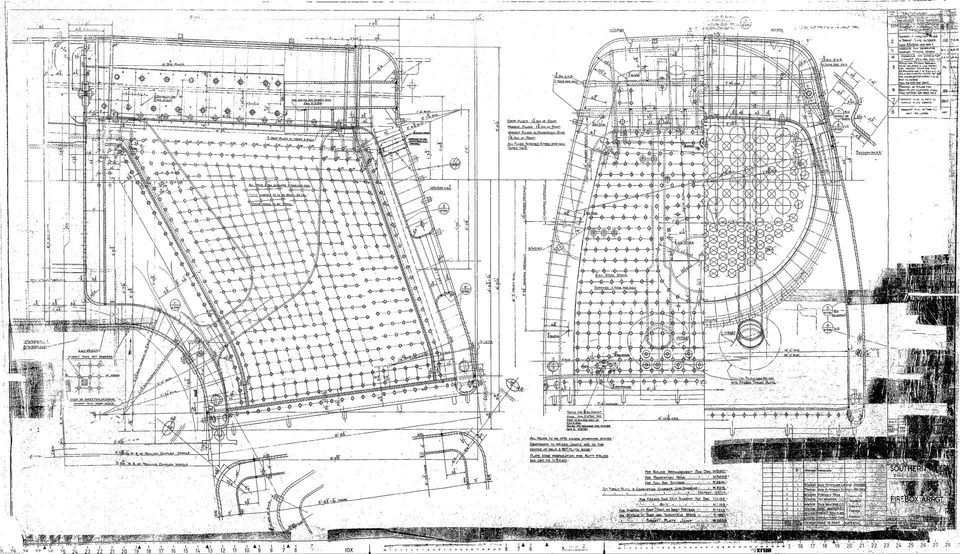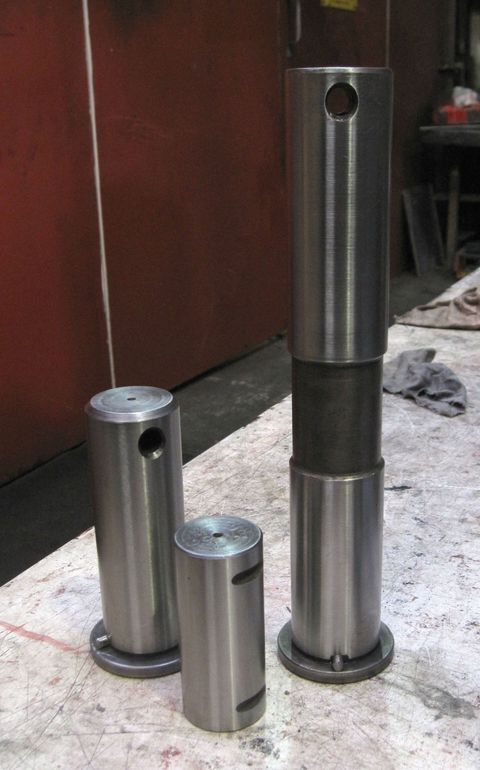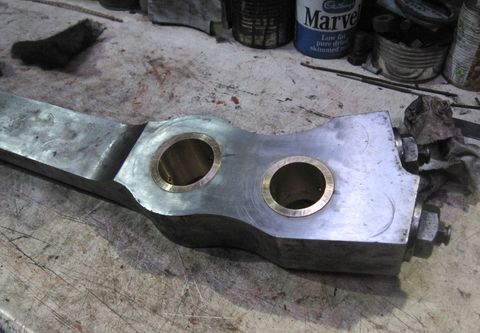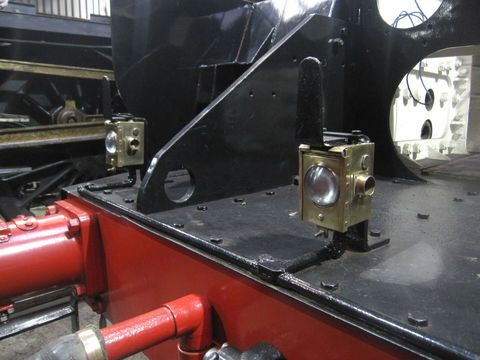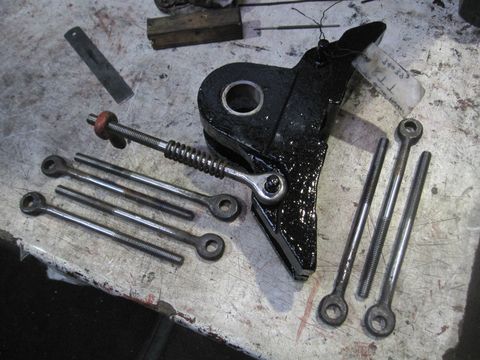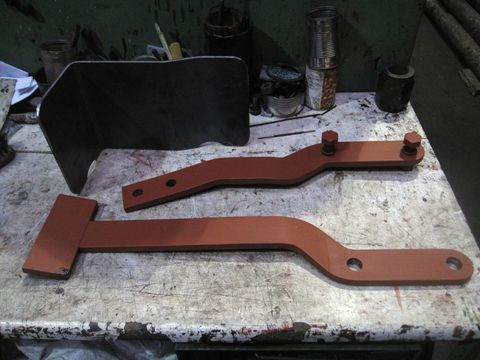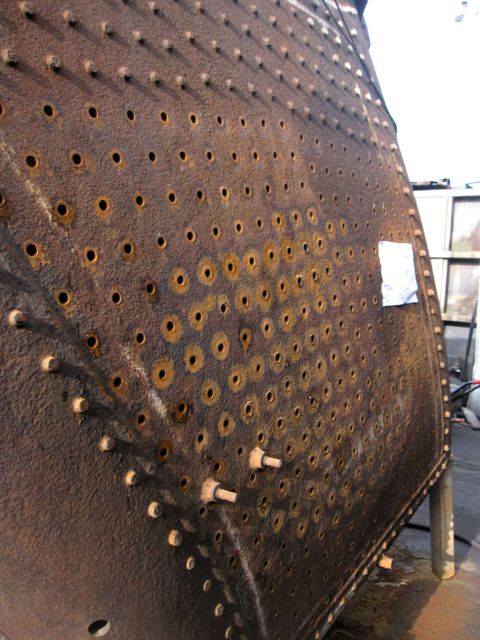Boscastle Locomotive Limited
20th February 2015
Boscastle's Firebox
In previous issues you will have seen that major work is needed on the firebox before Boscastle has a hope of steaming again. This can be better understood by a study of the Firebox Arrangement drawing opposite. It is important to distinguish between the inner firebox, where the coal goes, and the outer firebox containing the water, with space above it for the steam to collect (this quite apart from the light outer cladding which holds in the insulation and makes the engine look presentable). I like to think of the double walls forming a water jacket round the fire.
The outer firebox requires significant work to repair cracking, particularly on the back corners, but is basically sound. The area of greatest concern is the inner firebox, which includes the thermic syphons, visible in the side view – these aid circulation of the water. The point is that about two thirds of the plating is wasted beyond use, and we have yet to inspect the 'roof' and upper corners.
This raises the question of whether it would make better sense to build an entire new inner firebox while we are at it rather than repairing what we have, only to risk finding, ten years down the line, that the roof areas have to be rebuilt, requiring dismantling again. Fireboxes are not designed to be dismantled! Such a project is beyond our capability at Loughborough, but a feasibility study is under way to see if it can be done elsewhere, and if so at what cost. Watch this space...
- James Tawse
13th February 2015
Shown here is a selection of the ten new motion (valve gear) pins we have made to replace worn ones. The pins have been machined by our volunteer John Fletcher, then sent for case hardening and grinding to their finished size.
13th February 2015
Now that we have all of the motion pins, we have been able to machine new bronze bushes for most of the valve gear. This photo shows new bushes fitted to the inside combination lever. The bushes are pressed into the part on a hydraulic press and are then reamed out, until the associated pin fits accurately and freely.
13th February 2015
The volunteers have put a lot of effort into cleaning and polishing the marker lights for the front of the loco. Three of these have been fastened to the lamp irons, but the others will have to wait until the boiler and smoke deflectors are fitted.
13th February 2015
This shows one of the twelve refurbished brake block holders and nine repaired adjuster spring rods for the tender. One of the adjuster spring rods is in position on the block holder. The nine rods had damaged threads, bent ends, or both, so these have all had the old threaded ends cut off and new ones welded on. The adjuster rods adjust the brake block so that it doesn’t rub on the wheel when the brakes are in the ‘off’ position.
13th February 2015
Pictured above are the new injector brackets, which have been made for the Davis & Metcalfe injectors we purchased several years ago. The brackets have proven quite tricky to make, as they are shaped from 5/8” (15mm) thick steel and have four subtle bends in each.
13th February 2015
This shows the left hand side of the firebox, which has had all of the stay ends drilled, ready for the inner section of the firebox to be removed. The inner section of the firebox will be removed as soon as the weather is a little milder so as not to risk damaging the pneumatic punch or the remaining firebox. The cold makes metal more prone to cracking.
Images on this page are copyright A.J.Morgan, M.Playle
